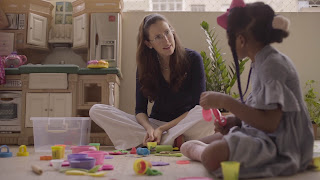A cultural-historical view of the role of an educator is as a mediator of the teaching and learning process and a more experienced learner amongst a community of learners. In a similar vein, the work of many Vygotskian play pedagogy theorists conceives the role of educators as children’s more experienced play partners. Educators can also act as mediators of learners’ critically reflective, collaborative dialogue about key concepts that are central to problem-solving within the imaginary situations of pretend play. This reflective activity often occurs in moments of sustained inquiry and guided feedback that precede and proceed joint play amongst educators and children. Taken together, moments of sustained inquiry, joint play and guided feedback amongst educators and children support children to act with greater intention and purpose in play.
Play-based project design in schools has yet to be fully understood. As part of a larger series that discusses play-based project design through the organization of space, time, resources and relationships, this segment of the series will focus on joint play and the relationships between educators and children. This series endeavors to contribute to the gap in the theory and practice in play pedagogy to support educators to create a more robust play-based project design as it is the anchor of the teaching and learning process.
Joint play as the center of a play-based project design focuses on one key activity: giving and receiving offers amongst play partners. The term “offers” is borrowed from the world of improv theater and means any action that educators and children take to support the development pretend play. Joint play is a continuous, collaborative building process, with each idea offered like a new thread woven into an intricate tapestry. Each thread seamlessly joins with the other threads, just as each offer joins with the other offers. Each offer should seamlessly build upon the previous one into a single, collaborative story. If you think of pretend play like a story, the roles are the characters, the scenarios with props are the setting and the scripts are the plot. Educators and children make offers continuously to shape the emerging play situation, carefully building upon what each one offers as the imaginary, pretend play situation becomes increasingly more complex and sophisticated.
What can be an offer? Adding new elements to the scenario or redesigning its organization is an offer. Creating roles, with responsibilities and specific characteristics, is another. Framing problems and proposing solutions that develop the emerging play script, is yet another. These offers can be made by children or educators while actively engaged in the play situation (inside the imaginary situation) or while discussing and reflecting upon it (when not actively playing, or outside the imaginary situation) to plan how to enrich it further. Both moments, inside and outside of the active play situation, give children the opportunity to make important contributions in molding play according to their needs and wishes and give educators the chance to support children’s development, especially the expansion of their conceptual understanding about how the world and human relations work as they make meaning through play.
Vygotskian play pedagogy theorists have used the term “play positioning” to indicate that educators can take a variety of positions in play, just as children can, such as:
- Leading play (Inside the imaginary, pretend play situation)
- Following play (Inside the imaginary, pretend play situation)
- Balancing play (Inside the imaginary, pretend play situation)
- Observing play (Outside the imaginary, pretend play situation)
- Directing play (Outside the imaginary, pretend play situation)
Leading, following and balancing play all occur inside the imaginary situation of pretend play. In leading play the educator or child makes a key offer that others can build upon. Following play is building upon the offers of others in a complementary way, but not that makes any major shift in the developing narrative of the play script. Balancing play is striking an equilibrium between leading and following. Observing play and directing play occur outside of the imaginary situation of pretend play during joint play. Observing play entails registering the pretend play situation in notes or recordings, while directing play involves giving feedback to players inside of the imaginary situation in the same sort of way that a film director would on a movie set.
Offers in educators and children’s joint play are the building blocks of any play-based project design. Offers take the imaginary, pretend play situations that often emulate real life situations from simple, superficial scenarios, props, roles and scripts to complex narratives replete with a deeper understanding of concepts as resources to frame problems and solve them innovatively. While the central relationships in joint play are between educators and children, they can also involve other play partners who are invited as visitors and/or shared through photos and video portfolios with others, thereby extending relationships collaboratively, critically and creatively through play pedagogy.
By putting play-based project design at the center of the teaching and learning process, the organization of relationships needs to be planned, as well as the organization of time, resources and space. Please check out the other segments in this series and subscribe to Contemporary Education on YouTube. Join me in transforming education to meet the challenges of the 21st century at www.contemporaryeducation.com and on Instagram and Facebook. Thank you for watching.
Join me in transforming education to meet the challenges of the 21st century by checking out Contemporary Education on:
YouTube Channel: https://www.youtube.com/@contemporaryeducation
Instagram: https://www.instagram.com/contemporary_education














No comments:
Post a Comment